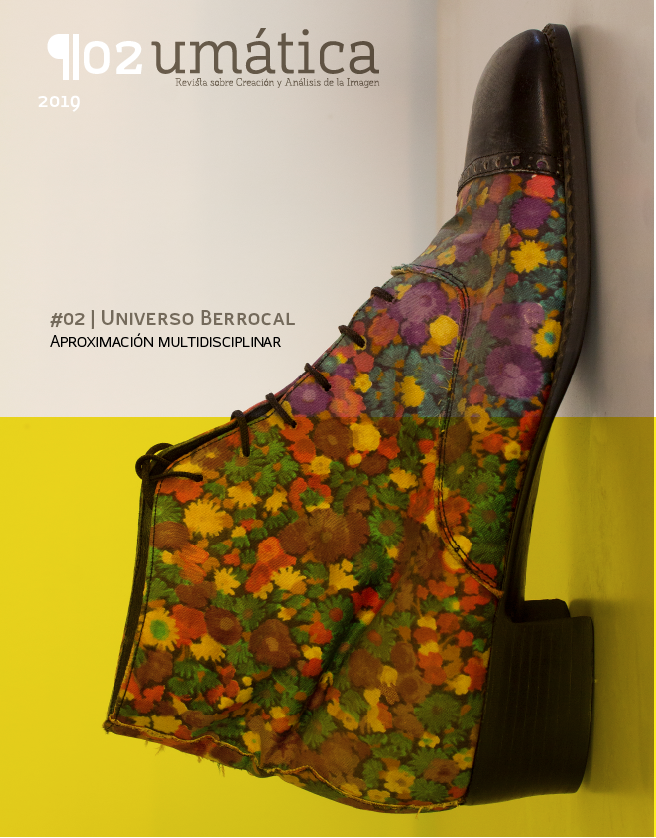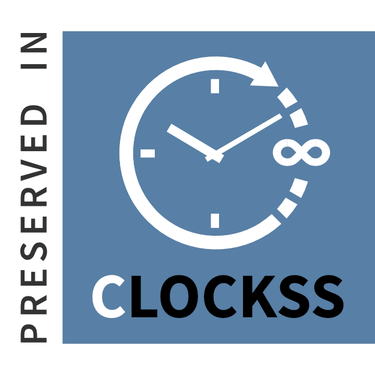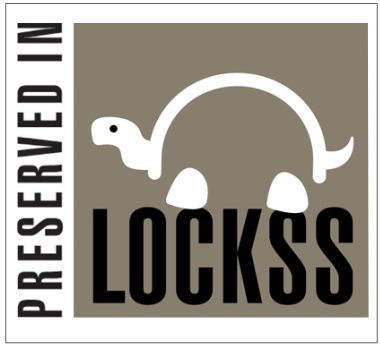Berrocal y la estética transhumanista
Una mirada transhumanista de la obra de Berrocal
DOI:
https://doi.org/10.24310/Umatica.2019.v1i2.7880Palabras clave:
transhumanismo, arte, robótica, Berrocal, escultura, estéticaResumen
La obra de Miguel Berrocal siempre es referida y recordada como un ejemplo de “arte matemático”, un adjetivo que tiene su sentido por ser de los artistas que aúnan en su obra escultórica la ingeniería y el arte. Para algunos, sus obras recuerdan al trabajo de un joyero o un relojero, un artesano que ha superado la línea que fue dibujada en el siglo XVIII y se ha convertido en artista. Hay, sin embargo, en sus métodos y su temática unas constantes que están siendo obviadas, que pasan normalmente desapercibidas, y que nos permiten encuadrar la obra de Berrocal en otro horizonte: el transhumanismo. En este artículo examinaremos los planteamientos ?losó?cos y estéticos claves del arte transhumanista y de la obra de Berrocal, en busca de una correlación que nos permita proponer una relectura de su obra y actualizar su posición en nuestra cultura artística y estética.
Descargas
Métricas
Publicación Facts
Perfil de revisores N/D
Información adicional autores
Indexado: {$indexList}
-
Indexado en
- Sociedad Académica/Grupo
- N/D
- Editora:
- Universidad de Málaga (España)
Citas
Bostrom, N. (2011). A history of transhumanist thought. Originally published in Journal of Evolution and Technology, vol. 14 (Issue 1). April 2005; reprinted (in its present slightly edited form) in Academic Writing Across the Disciplines, eds. Michael Rectenwald & Lisa Carl (New York: Pearson Longman, 2011), pp.157-191. Recuperado de https://www.nickbostrom.com/.
Charles, N., & Carter, B. (2013). Animals, agency and resistance. Journal for the Theory of Social Behaviour, 43(3), pp. 322-340.
Dard, O. y Moatti A. (2016). Aux origines du mot “transhumanisme”. Futuribles, (413), pp. 85-94.
Recuperado de https://search.proquest.com/docview/1512604732?accountid=14568
Keulemans, G. (2016). The geo-cultural conditions of kintsugi. The Journal of Modern Craft, 9(1), 15-34. Recuperado de http://dx.doi.org/10.1080/17496772.2016.1183946
Moya, C. (2006). Algunos rasgos de nuestro concepto preteórico de lo mental. En Filosofía de la mente (17-27). Valencia, Universitat de Valencia.
Sanmartín Arévalo, F.A. (2014). Estéticas de la hibridación, del cuerpo transhumano al cuerpo posthumano (Trabajo fin de máster, Universidad de Cuenca-Ecuador). Recuperado de http://dspace.ucuenca.edu.ec/handle/123456789/5487
Starr R.N. (2019). Art and Transhumanism. En Lee N. (Ed.), The Transhumanism Handbook. Springer, Cham
Vita-More, N. (22 de junio de 2012). Interview with Natasha, H+ Magazine. [Transcripción] Recuperado de https://hplusmagazine.com/2012/06/22/interview-with-natasha-vita-more/
Wennerscheid S. (2019). Not in the Image of Humans: Robots as Humans’ Other in Contemporary Science Fiction Film, Literature and Art. En: Lee N. (Ed.), The Transhumanism Handbook. Springer, Cham
Descargas
Publicado
Cómo citar
Número
Sección
Licencia
Todos los contenidos publicados en Umática.Revista sobre Creación y Anáisis de la Imágen están sujetos a la licencia Creative Commons Reconocimento-NoComercia-Compartirigual 4.0 cuyo texto completo puede consultar en <http://creativecommons.org/licenses/by-nc-sa/4.0>
Se pueden copiar, usar, difundir, transmitir y exponer públicamente, siempre que:
- Se cite la autoría y la fuente original de su publicación (revista, editorial y URL de la obra).
- No se usen para fines comerciales.
- Se mencione la existencia y especificaciones de esta licencia de uso.
Los derechos de autor son de dos clases: morales y patrimoniales. Los derechos morales son prerrogativas perpetuas, irrenunciables, intransferibles, inalienables, inembargables e imprescriptibles. De acuerdo con la legislación de derechos de autor,Umática.Revista sobre Creación y Anáisis de la Imágen reconoce y respeta el derecho moral de los autores/as, así como la titularidad del derecho patrimonial, el cual será cedido a la Universidad de Málaga para su difusión en acceso abierto. Los derechos patrimoniales, se refieren a los beneficios que se obtienen por el uso o divulgación de las obras. Umática.Revista sobre Creación y Anáisis de la Imágen se publica en open access y queda autorizada en exclusiva para realizar u autorizar por cualquier medio el uso, distribución, divulgación, reproducción, adaptación, traducción o transformación de la obra.
Es responsabilidad de los autores/as obtener los permisos necesarios de las imágenes que están sujetas a derechos de autor.
Nota de copyright: Aquellos autores/as que tengan publicaciones con esta revista, aceptan y certifican los términos siguientes:
• Que ha contribuido directamente al contenido intelectual del trabajo, del cual se hace responsable a todos los efectos.
• Que aprueba los contenidos del manuscrito que se somete al proceso editorial de la revista UMÁTICA, REVISTA SOBRE CREACIÓN Y ANÁLISIS DE LA IMAGEN, y por tanto está de acuerdo en que su nombre figure como autor.
• Que el contenido del artículo no ha sido publicado y que tampoco figura en otro trabajo que esté a punto de publicarse.
• Que se compromete a no someterlo a consideración de otra publicación mientras esté en proceso de dictamen en la revista UMÁTICA, REVISTA SOBRE CREACIÓN Y ANÁLISIS DE LA IMAGEN, ni posteriormente en caso de ser aceptado para su publicación.
• Que no ha tenido ni tiene, relaciones personales o financieras que puedan introducir prejuicios y sesgos en el desarrollo o los resultados del presente trabajo.
• Que han sido mencionadas en el epígrafe de agradecimientos todas aquellas personas que, habiendo otorgado su permiso para tal mención, han contribuido de manera sustancial al desarrollo del trabajo.
• Que se compromete a facilitar, cuando así lo requiera la revista, el acceso a todos los datos y fuentes en los que se funda el trabajo presentado.
• Que participará activamente en la realización de todas aquellas modificaciones de estilo u orto-tipográficas que sean necesarias para la publicación del trabajo cuando así se lo notifique el equipo editorial de la revista.
• Que no ha violado, ni violará, las leyes y derechos humanos o animales durante el proceso de investigación y publicación de este trabajo.
• Que ninguna de las instituciones en las que desarrolla su labor científica e investigadora ha presentado objeciones con respecto a la publicación del manuscrito que se somete a evaluación.
• Que todos los datos y las referencias a materiales ya publicados están debidamente identificados con su respectivo crédito e incluidos en las notas bibliográficas y en las citas que se destacan como tal y, en los casos que así lo requieran, cuenta con las debidas autorizaciones de quienes poseen los derechos patrimoniales.
• Que los materiales están libres de derecho de autor y se hace responsable de cualquier litigio o reclamación relacionada con derechos de propiedad intelectual, exonerando de responsabilidad a la revista UMÁTICA, REVISTA SOBRE CREACIÓN Y ANÁLISIS DE LA IMAGEN
• Que en caso de que el trabajo sea aprobado para su publicación, autoriza de manera ilimitada en el tiempo a la entidad editora para que incluya dicho texto en la revista UMÁTICA, REVISTA SOBRE CREACIÓN Y ANÁLISIS DE LA IMAGEN y pueda reproducirlo, editarlo, distribuirlo, exhibirlo y comunicarlo en el país y en el extranjero por medios impresos, electrónicos, CD, Internet o cualquier otro medio conocido o por conocer.







23.png)








